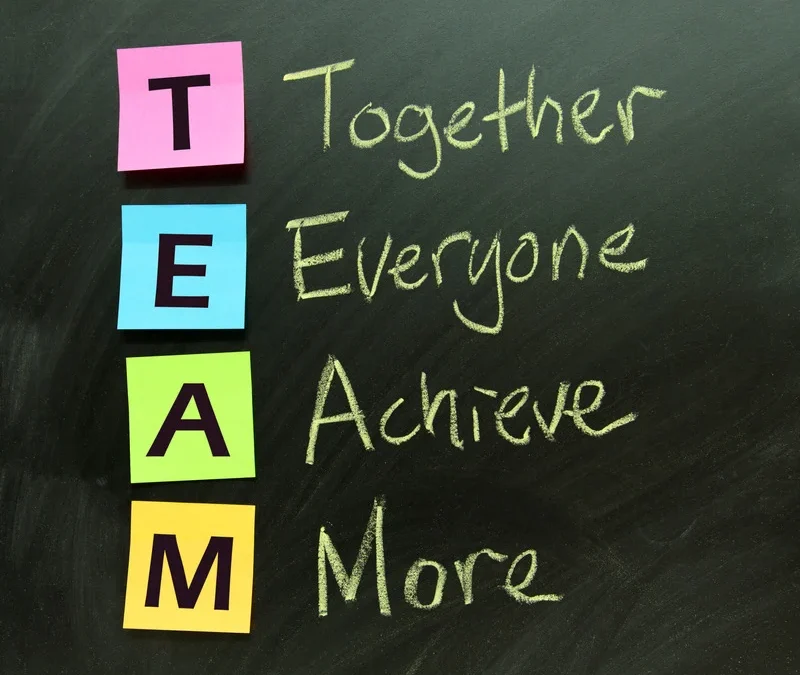The world works primarily based on unspoken or unclear expectations. In fact, we naturally show up to work with high expectations:
I expect I’ll be treated well. I expect that my employee is a professional and will know what to do. I expect that the report will be in my inbox on Friday, or I expect my team to be able to meet the delivery date.
The problem with expectations is, there’s really only two possibilities of what the outcome could be, and neither one is very good. The first is that we’re disappointed that the expectation isn’t met. Alternatively, the second potential outcome is that we feel kind of neutral. We think, well, they met the expectation, so what? How does that word even feel? I know how it makes me feel when I hear it or when someone has an expectation of me that I wasn’t a part of creating. I get defensive, closed off and ready to rebel.
Expectations are cowardly and reactive. They’re cowardly in the sense that I’m unwilling to have a conversation with another person to get to an agreement. They’re also cowardly in the sense that it sets me up to put the blame on the other person who didn’t live up to my expectations. The disappointment that you feel isn’t their fault, it’s your fault.
Expectations are the thoughts we have about how something should go or about how someone should behave. Agreements, on the other hand, are created and live on in conversations between two people or within a group.
Expectations Lead to Dysfunction
Most leaders think success comes from a brilliant idea, but the truth is, success comes from execution of the plan, continuous resilience, the act of paying attention to detail, and being prepared when the eventual crisis comes.
This doesn’t happen by having a strict set of operating policies, but rather, by creating an environment where clear agreements are made and kept.
Operating along with expectations from a team with diverse ideas and perspectives is a recipe for disappointment, misalignment, and less-than-optimal performance. When an organization is small, these can be addressed and the impact mitigated; however, as an organization grows, these become more difficult to address and eventually create dysfunction that significantly impacts the team’s ability to achieve its goals.
Some examples of how this shows up in organizations include:
- You and your team have to put in a massive amount of energy and time to get things done.
- Commitments made in meetings and conversations are not followed up on, and individuals don’t keep one another in the loop on actions taken. Teammates aren’t intentionally sabotaging each other, but not everybody is pulling in the same direction.
- There are pockets of high morale and pockets of low morale, but no consistency across the organization. The state of morale is largely based on individual managers. This inconsistency negatively impacts cross-team collaboration.
- Turnover of those in leadership roles is high.
- Teams are consistently missing deadlines for projects.
What is a culture of agreements?
The goal of creating a culture of agreements is to facilitate a shift from individual and/or collective expectations to conversations where they create agreements within the areas that drive the success of the team and the organization.
Let’s look back at the expectations that I mentioned earlier, and let’s transform those into an agreement. Instead of “I expect I’ll be treated well”, we can instead agree on how we’re going to behave when we disagree. Instead of “I expect that my employee is a professional and will know what to do”, we can agree on what will be done, how it will be done, and when it will be done by. Instead of “I expect that the report will be in my inbox on Friday”, we can agree on what the report will contain, by what time on Friday it will be sent, and how it will be handled if this can’t be completed in time. And for the last one: instead of “I expect my team to be able to meet the delivery date”, we agree on what’s going to be possible and what is required in order to meet that date.
Agreements Lead to High-Performance
Let me start by saying that, at the outset, it takes intentional time and investment to create a culture of agreements and to get your team aligned and performing to their highest potential. However, the rewards are absolutely worth it.
One client for whom we created a culture of agreements found themselves well on their way to exceeding $100m in revenue and advancing to a meaningful, yet sustainable expansion over the next five years.
Agreements have proven transformational for the CEO and the leadership team. They do not have too many standard operating practices – they operate more through an environment of expressing commitments and making agreements, where individuals are adamantly against making assumptions.
The CEO says to his team: “Don’t rely on your expectations of what people do. Be more intentional through commitment agreements … [thereby] preventing vacuums by providing for a clear communications environment.”

